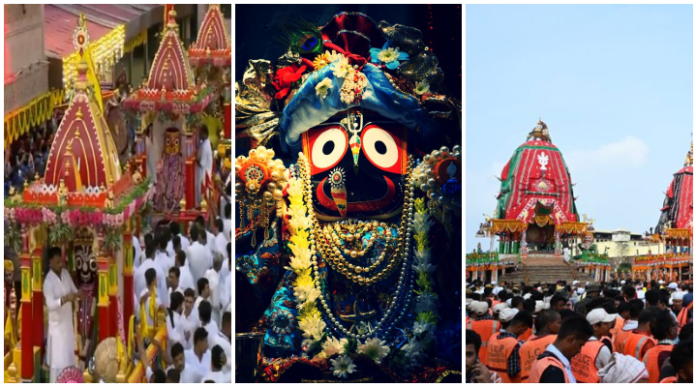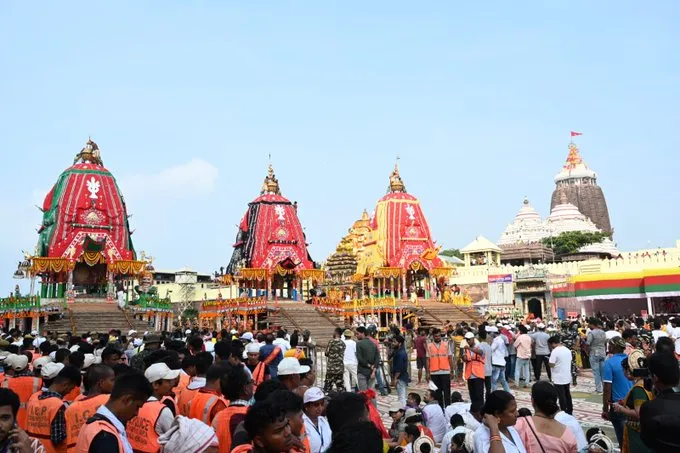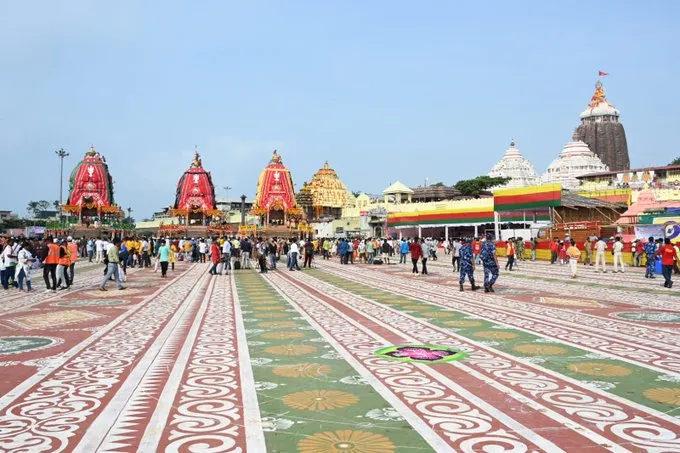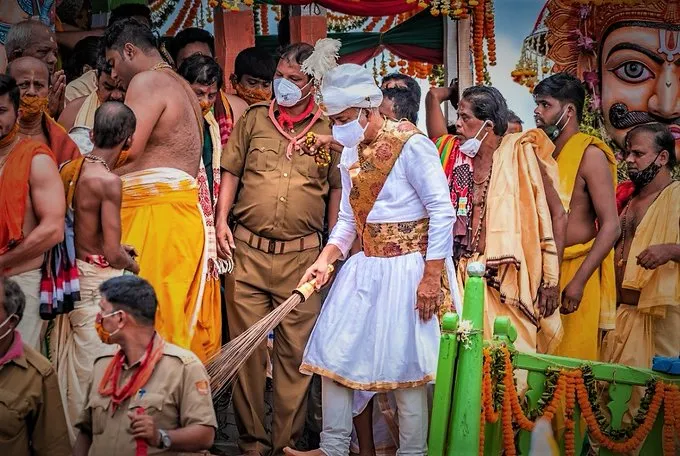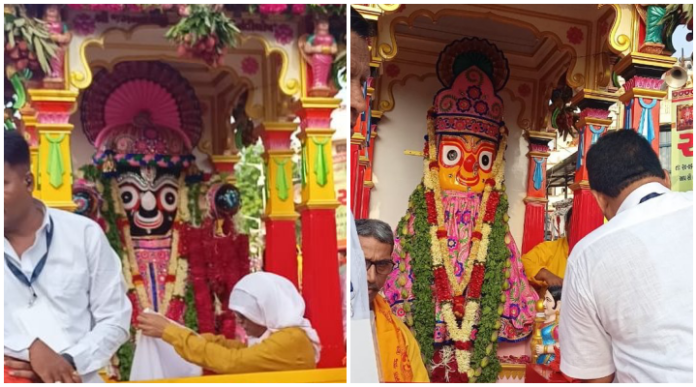East and west: Gujarat and Odisha celebrate the Rathayatra of Lord Jagannath with pomp and splendour
East and west: Gujarat and Odisha celebrate the Rathayatra of Lord Jagannath with pomp and splendour
cross-posted from: https://lemmy.run/post/10224
Author: Sanghamitra
East and west: Gujarat and Odisha celebrate the Rathayatra of Lord Jagannath with pomp and splendour
Today is Ashadha Shukla Dwitiya, the auspicious day for Lord Jagannath's Rathayatra every year. Two Indian states, located on the two opposite coasts of the grand nation, are celebrating the festival with much fervor and grandeur.
Today is Ashadha Shukla Dwitiya, the auspicious day for Lord Jagannath’s Rathayatra every year. Two Indian states, located on the two opposite coasts of the grand nation, are celebrating the festival with much fervor and grandeur.
Odisha Rathayatra
Odisha, the home abode of Lord Jagannath, has been celebrating the Rathayatra festival for centuries now. The grand Jagannath Temple at Puri, constructed in the 12th century organizes the world’s largest and oldest Rathayatra festival every year in the ‘Bada Danda’ in Puri.
The three grand chariots await outside the Singhadwara of the Temple on the day of the Rathayatra. The construction of the chariots starts on the day of Akshaya Tritiya, and designated carpenters, known as ‘Maharanas’ make the chariots. The colour schemes, and design of the chariots are fixed for each of the three Gods.
Lord Jagannatha’s chariot is called ‘Nandighosha’, Lord Balabhadra’s chariot is called ‘Taladhwaja’ and Devi Subhadra’s chariot is called ‘Debadalana’. Lord Sudarshana rides in the Debadalana too.
The process of bringing the holy Trinity out from their pedestal in the temple to their respective chariots is called ‘Pahandi’.
After the Gods are seated in their respective chariots, the Gajapati Maharaj, the traditional ruler of Kalinga, performs the ritual of ‘Chhera Panhara’. It is the ritual of sweeping the chariots with a golden broom. It signifies the belief that the Gajapati Maharaj is the servant of Lord Jagannath and rules in his name.
The Chhera Panhara ritual has another significance in Odia folklore and literary tradition. Odia epic ‘Kanchi Kaveri Upakhyana’ describes Purushottama Deva’s campaign to win kingdoms in the south of Kalinga. Purushottama Deva was insulted by Kanchi ruler Saluva Narasingha Deva because the former wanted to marry the latter’s daughter Padmavati. Saluva Narasingha Deva had declared that he would rather get his daughter married to a poor sweeper than allow her to marry the Kalinga Gajapati.
Purushottama Deva, fumed at the insult, had attacked Kanchi and eventually won with direct help from Lord Jagannatha and his brother Lord Balabhadra. After bringing Padmavati to Kalinga, he was yet to forget the insult. So he had declared that Padmavati will be married off to a sweeper, just as her father wanted.
However, the clever ministers of Purushottama Deva knew that the Kanchi princess deserves to marry the Gajapati, and Kalinga deserves a queen of unparalleled beauty and qualities that she possessed. So on the day of Rathayatra, when Purushottama Deva was performing the sweeping ritual, they brought the Kanchi princess on board the chariot, and she put a garland on the neck of the Gajapati, just when he held a broom in his hand, literally being a ‘sweeper’.
Purushottama Deva had loved the princess and there was no way he could be angry now, after being married to her in the presence of Lord Jagannatha himself.
Thus, the ministers avoided their king’s wrath and made him see reason by forgetting his anger. The story can be read in detail here.
In Puri’s Rathayatra, the Gods visit the Gundicha Temple and stay there for 9 days. Then they return to their own Temple, that Yatra is called ‘Bahuda Yatra’.
Gujarat Rathayatra
Gujarat is home to Dwaraka, Lord Krishna’s kingdom. Like Odisha, it too has a deep Vaishnava tradition. The state has been celebrating Rathayatra for nearly a century and a half.
It is celebrated as a ‘Lokotsav’ or a public festival in Gujarat. Though many cities have their own Rathyatra, Ahmedabad hosts the grandest and biggest event. The CM performs the ‘Pahind Vidhi’ which is similar to the ‘Chhera Panhara’ ritual of Odisha.
In Ahmedabad Rathyaatra, the chariots pass through the different parts of the city. The chariots cover a distance of 14 km and the devotees offer ‘mahabhoj’ to the entire entourage.
Union Minister Amit Shah today performed the mangal aarti at the Jagannath Temple in Ahmedabad before the commencement of Rathayatra. CM Bhupendra Patel performed the ‘Pahind Vidhi’. This is the 146th year of the Ahmedabad Rathayatra.
Gujarat and Odisha are separated by over 1800 km, located on the opposite coasts of India. However, Rathayatra is something that binds the two states together. Each celebration is unique in its style and decorations, but the deep Jagannath Bhakti and the Vaishnava traditions of their people are what bring them close in mind and spirit.
Rathyatra celebrations in these two distant states are another example of how the states of India, despite diverse linguistic and cultural norms, are bound together by strings of Hindu tradition and spirituality.
